
Tarot is a pack of playing cards, used from at least the mid-15th century in various parts of Europe to play card games such as Tarocchini. From their Italian roots, tarot-playing cards spread to most of Europe, evolving into a family of games that includes German Grosstarok and modern games such as French Tarot and Austrian Königrufen. In the late 18th century French occultists made elaborate, but unsubstantiated, claims about their history and meaning, leading to the emergence of custom decks for use in divination via tarot card reading and cartomancy. Thus, there are two distinct types of tarot packs in circulation: those used for card games and those used for divination. However, some older patterns, such as the Tarot de Marseille, originally intended for playing card games, are occasionally used for cartomancy.
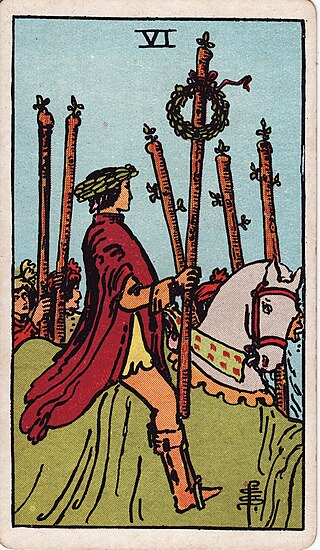
The Six of Wands, or Six of Batons, is a card used in Latin-suited playing cards, which include tarot decks. It is part of what tarot card readers call the "Minor Arcana," the six of wands cards in divination decks with illustrated pip cards, displays a laureled horseman bearing a staff adorned with laurel crown. Footmen with staves are at his side.
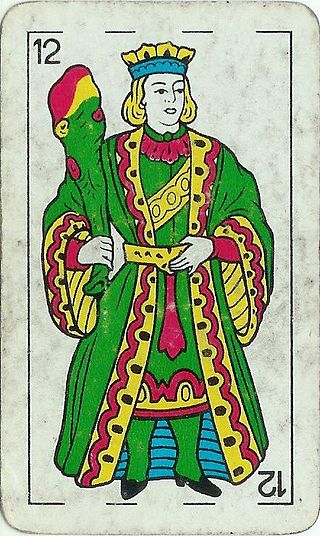
The King of Wands, or King of Batons, is a card used in Latin-suited playing cards which include Italian, Spanish, and tarot decks. It is part of what tarot card readers call the "Minor Arcana".

The Ace of Cups is a card used in Latin-suited playing cards. It is the ace from the suit of cups. In Tarot, it is part of what card readers call the "Minor Arcana", and as the first in the suit of cups, signifies beginnings in the area of the social and emotional in life.
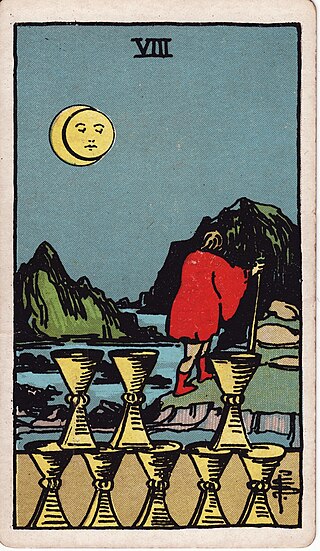
The Eight of Cups is a card used in Latin-suited playing cards, which include tarot decks. It is part of what tarot card readers call the "Minor Arcana"
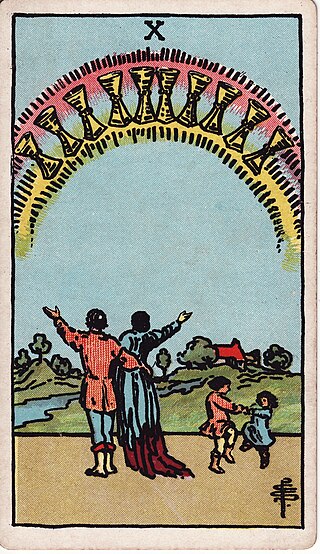
The Ten of Cups is a Minor Arcana tarot card.

The Queen of Cups is a card used in Latin-suited playing cards. It is the queen from the suit of cups. In Tarot, it is part of what tarot card readers call the "Minor Arcana".
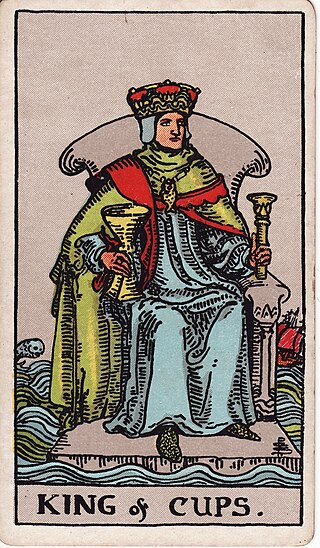
The King of Cups is a card used in suited playing cards, which include tarot decks. It is part of what esotericists call the Minor Arcana.
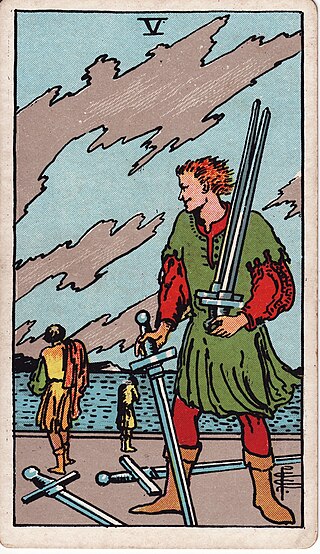
The Five of Swords is a Minor Arcana tarot card.
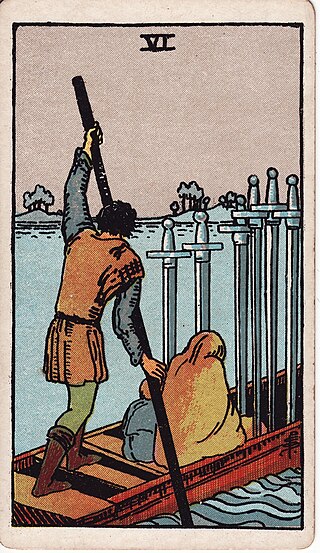
The Six of Swords is a card used in Latin-suited playing cards which include tarot decks. It is part of what tarot card readers call the "Minor Arcana".

The Page of Swords is a card used in Latin-suited playing cards which include tarot decks. It is part of what tarot card readers call the "Minor Arcana"

The Knight of Swords is a card used in Latin-suited playing cards which include tarot decks. It is part of what tarot card readers call the "Minor Arcana".

The Queen of Swords is a card in the suit of swords, part of the Minor Arcana set of the tarot.
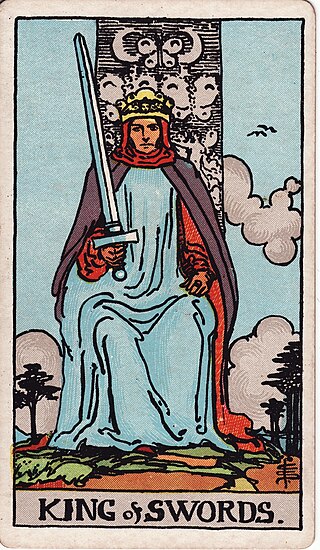
The King of Swords is a card used in Latin-suited playing cards which include tarot decks. It is part of what tarot card readers call the "Minor Arcana".

Ace of Coins is a card used in Latin-suited playing cards, which include tarot decks. It is part of what tarot card readers call the "Minor Arcana" The coins suit is often called "Pentacles" by tarot readers.

Four of Coins is a card used in Latin-suited playing cards, which include tarot decks. It is part of what tarot card readers call the "Minor Arcana".

Eight of Coins is a card used in Latin-suited playing cards which include tarot decks. It is part of what tarot card readers call the "Minor Arcana"
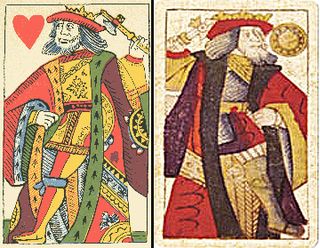
King of Coins is a card used in Latin-suited playing cards. It is the king from the suit of coins. In Tarot, it is part of what tarot card readers call the "Minor Arcana".

The suit of goblets, more often known in modern times as the Suit of Cups, is one of four suits of tarot which, collectively, make up the Minor Arcana. They are sometimes referred to as chalices. Like the other suits of the Minor Arcana, it contains fourteen cards: ace (one), two through ten, page, knight, queen and king. Historically, the suit represented the First Estate. Tarot cards were originally designed for card play and are still used throughout much of Europe to play various Tarot card games. However, in English-speaking countries, where the games are largely unknown, Tarot cards came to be utilized primarily for divinatory purposes. In modern card games, the equivalent suits are Hearts or Cups.

The suit of swords is one of the four suits of the Minor Arcana in a 78-card cartomantic tarot deck. It is derived from the suit used in Latin-suited playing cards, such as Spanish, Italian and Latin-suited tarot decks. Like the other tarot suits, it contains fourteen cards: ace (one), two through ten, page, knight, queen and king. Occultists claim that the suit represents the Second Estate.





















